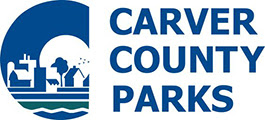Partnerships
Astronomical League

The Astronomical League’s objective is to promote the science of astronomy by fostering astronomical education, by providing incentives for astronomical observation and research, and by assisting communication among amateur astronomical societies.
The Astronomical League is composed of over 240 local amateur astronomical societies from all across the United States. These organizations, along with our Members-at-Large, Patrons, and Supporting members form one of the largest amateur astronomical organizations in the world.
The Belwin Conservency

The wellbeing of each and every one of us is tied to the health of our natural world. That’s why we are happier and healthier when we spend time in nature. It’s also why we need everyone to feel passionate about protecting it. At Belwin, we spark that passion every day through conservation, education, and immersive experiences on 1,500 acres in the Saint Croix Valley.
Long Lake Conservation Center

Baylor Regional Park
Baylor Regional Park is a 201 acre park situated in western Carver County on Eagle Lake. The park offers 50 camping sites. 35 sites have water and electrical hookups and 15 sites are primitive. Other facilities include: group camping area, picnic areas, showers, swimming beach, beach house, reservable picnic shelters, ball field, sand volleyball court, horseshoe pits, and an 18 hole disc golf course.
Cedar Creek Ecosystem Science Reserve

The MAS hosts public star parties and other events at Cedar Creek in the field adjacent to Lindeman Lab. See the MAS calendar for scheduled upcoming events at Cedar Creek.
Starry Skies North IDA
THERE’S NOTHING MORE BEAUTIFUL THAN THE NIGHT SKY. That means the most beautiful thing in the world can belong to all of us. The noticeable lack of stars is a drain on the environment, on our resources, and affects us all.
Starry Skies North IDA Vision:
- Create more certified International Dark Sky Places as the regional chapter of the International Dark Sky Association (IDA)
- Universal awareness of light pollution and appreciation of the night sky, including:
- Implementing star-friendly outdoor lighting ordinances:
- Developing regional astrotourism resources
- Fostering active community groups that host accessible education, gathering, and outreach
The Bell Museum

Engage all your senses in our Touch & See Lab with 10,000-year-old fossils, living plants and animals, and more. Wander outside on our green roof and observation deck, and explore the learning landscape of native plants, geology gardens, and solar station.
Como Planetarium
Como Planetarium is part of St. Paul Public Schools (ISD 625). The physical building is currently OPEN for St. Paul Public School students!
Virtual programs are available to schools both within and outside St. Paul Public Schools (ISD 625). We serve over 15,000 members of the community during the school year!
Minnesota Institute of Astrophysics

Simulation Curriculum

Its flagship products, Starry Night and SkySafari are the world’s leading astronomy applications for use on PC’s & Macs, Chromebooks, iPads, iPhones, Android & Surface Tablets. Starry Night is in many thousands of classrooms and in the hands of millions of students worldwide and is bundled with most major college Astronomy textbooks. It is the engine running the most advanced, teacher-friendly planetariums in the world.



